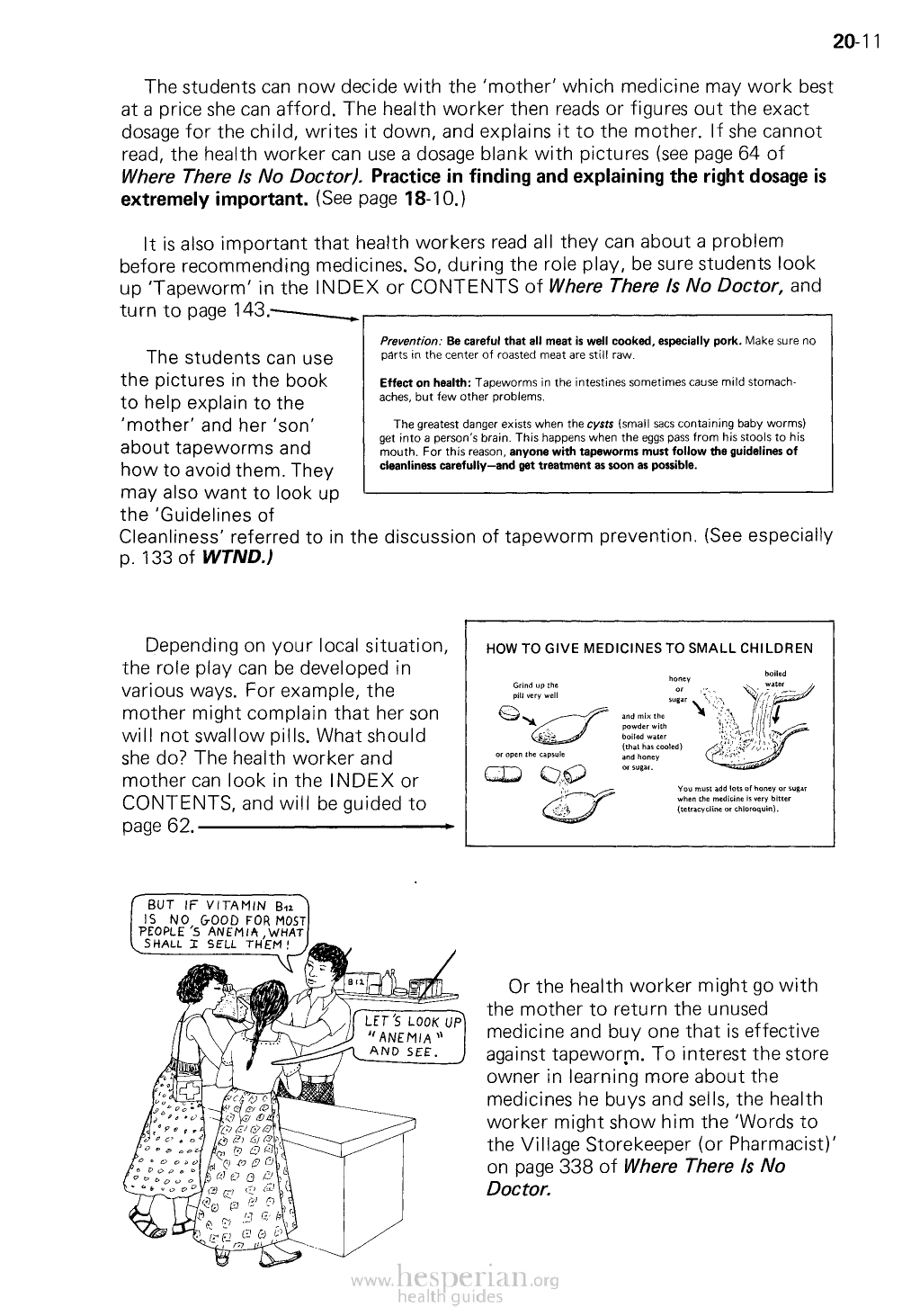
20-11
The students can now decide with the ‘mother’ which medicine may work best at
a price she can afford. The health worker then reads or figures out the exact dosage
for the child, writes it down, and explains it to the mother. If she cannot read,
the health worker can use a dosage blank with pictures (see page 64 of Where
There Is No Doctor). Practice in finding and explaining the right dosage is
extremely important. (See page 18-10.)
It is also important that health workers read all they can about a problem
before recommending medicines. So, during the role play, be sure students look
up ‘Tapeworm’ in the INDEX or CONTENTS of Where There Is No Doctor, and
turn to page 143.
The students can use
the pictures in the book
to help explain to the
‘mother’ and her ‘son’
about tapeworms and
how to avoid them. They
may also want to look
up the ‘Guidelines of
Cleanliness’ referred to in the discussion of tapeworm prevention. (See especially
p. 133 of WTND.)
Depending on your local situation,
the role play can be developed in
various ways. For example, the
mother might complain that her son
will not swallow pills. What should
she do? The health worker and mother
can took in the INDEX or CONTENTS,
and will be guided to page 62.
Or the health worker might go
with the mother to return the unused
medicine and buy one that is effective
against tapeworm. To interest the
store owner in learning more about the
medicines he buys and sells, the health
worker might show him the ‘Words to
the Village Storekeeper (or Pharmacist)’
on page 338 of Where There Is No
Doctor.